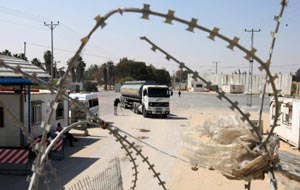
This issue of the “State of the Gaza Strip Border Crossings” is released under the coronavirus pandemic, where various countries across the world have adopted measures to combat the spread of the virus, that entail severe restrictions on the freedom of movement. Both the Israeli authorities and the Palestinian National Authority have enforced restrictions on movement to and from the Gaza Strip since early March 2020, which have negatively impacted the Gaza Strip population who are already suffering catastrophic living conditions due to the 13-year long Israeli closure and restrictions on the freedom of movement of goods and individuals which have led to skyrocketing rates of poverty and unemployment.
The heightened Israeli restrictions included denying all categories, including those previously permitted, from travelling via Beit Hanoun Crossing, except for a limited number of humanitarian cases. Additionally, March witnessed a shar decline in the number of patients who were allowed to travel abroad for medical treatment.
Simultaneously, the Israeli authorities continued to impose closure on the Gaza Strip for the 13th consecutive year and placed tightened restrictions on movement of Gaza Strip residents and continues to ban the Gaza population from travelling abroad or returning home through Beit Hanoun Crossing. The Israeli authorities continued to impose restrictions on the entry of goods classified as “dual-use items”,[1] which enhanced the deterioration of economic, health and educational situation in addition to the infrastructure. Furthermore, Israeli authorities continued to ban the Gaza Strip exports, except for very limited agricultural products, constituting only 10% of the total monthly Gaza exports before the closure.
[1] Israeli authorities claim that despite the fact that these items are normally used for civilian purposes, it is possible to use them in developing the Palestinian armed groups’ military capacity.
Download the Report (PDF)